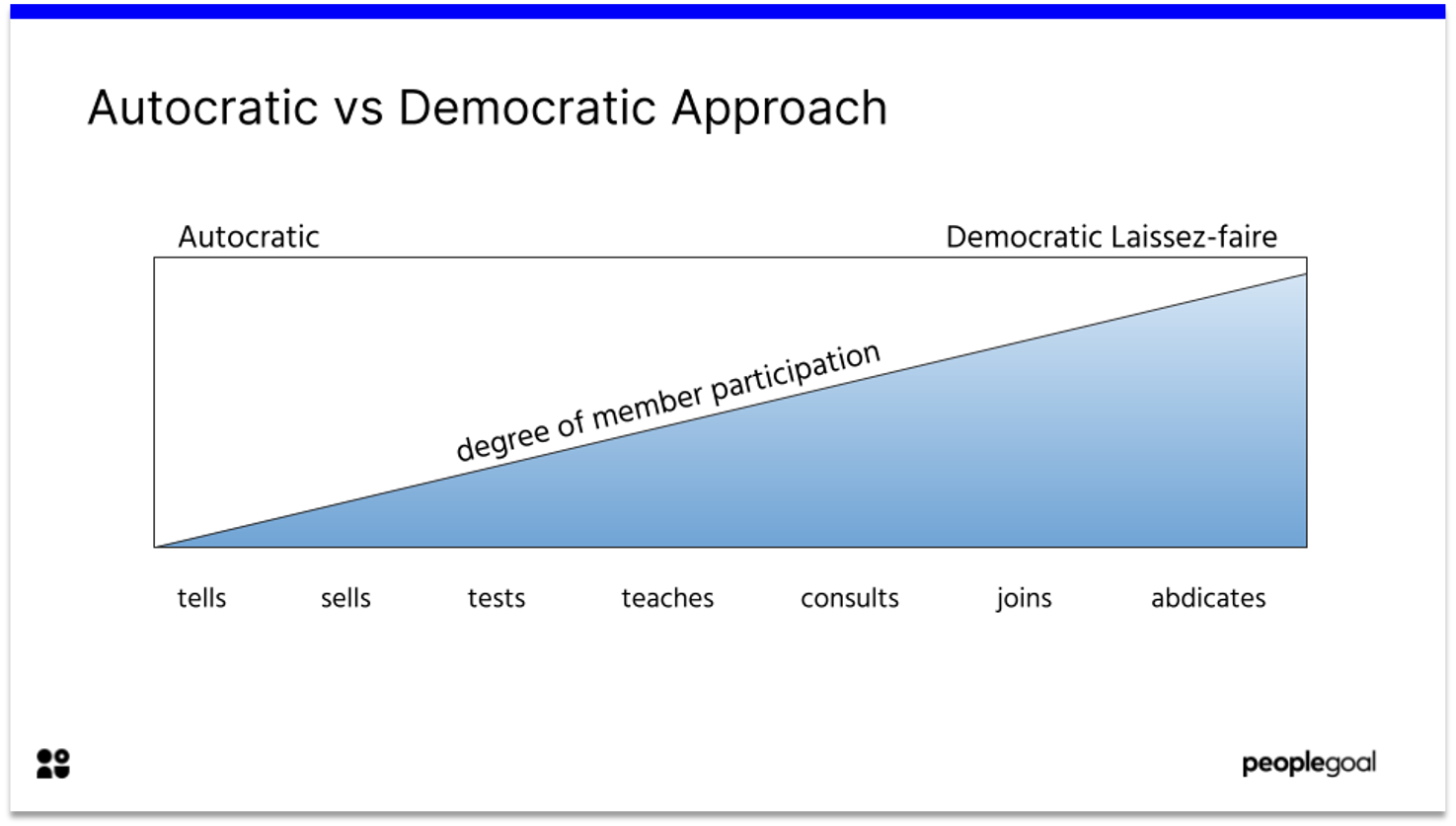Sometimes it feels as though there is an endless string of leadership styles to learn and master. From charismatic leaders to bureaucratic leaders, there are many different types of leadership. Almost all of the types have their uses, even servant leaders. After all, each approach to leadership will inspire distinct responses from team members depending on the situation. When it comes to deciding on the most effective way to lead, we can take a look at a statement from Dwight Eisenhower:
“Leadership is the art of getting someone else to do something you want done because he wants to do it, not because your position of power can compel him to do it”
Whilst management is the day-to-day supervision and guidance of the team, leadership is the inspirational and motivational aspects that help each of them understand their purpose within the company and encourage them to challenge themselves. Each member of a team is a cog in a machine, some are larger cogs than others but without all of them working together, the machine falls apart.
That being said, a leader’s role is to enable their teams to do their best work by guiding them towards success. They must inspire others by displaying excellent self-leadership and encourage others to develop leadership qualities. Whilst some people are born with personality traits that align well with leadership roles, many of us have the capacity to be great leaders depending on the situation.
We know that there are various styles of leadership, all of which can be effective in the right setting. To build on this, let’s see together the most common types of management style, drawn from Daniel Goleman’s discussion of leadership styles that get results:

Importance of developing a style of leadership
Before we get into the different ways you can approach leadership, you might be thinking, why on earth does leadership types matter?
Understanding your approach to leading will allow you to take ownership and responsibility for your teams. It will also help you to align your values, strengths, abilities and experience with those of the company.
Moreover, to have the greatest impact as a leader, you need to be a good one. And in order to be a good leader you need to understand the fundamentals of leadership and where you want to go. Understanding your current approach establishes a baseline which you can use to make improvements.
How to choose a leadership style
There is no perfect type of leadership. Each of the styles that we will discuss in this post have their individual merits and drawbacks. But there are many things you can consider when you pick how you want to lead your teams.
A lot depends on the culture and values of your company. Once you have identified the kind of leader management would like you to be, you can consider your personal strengths, abilities and experiences. Are you an excellent motivator? Or have you had lots of experience dishing out tasks? Perhaps you have an excellent capacity for empathy. Think about how your personal attributes match up to the different styles.
It’s also important to put yourself in your team’s shoes. How would you like to be treated? This is typically a great starting point.
Authoritarian/Autocratic leadership
First, we have authoritarian (or autocratic) leaders and as the name implies they focus on control and chain of command to achieve results. While you don’t have to be a dictator to use this style, an autocratic management style certainly involves direct supervision and unwavering support of the message from leadership. This type is more heavily focused on one-sided feedback and communication than other styles.
Paternalistic leadership
It’s in the name with this one… paternalistic leadership is centred around treating subordinates like a parent would. Advocates of this style would suggest treating their team as a family and focus on maintaining personal relationships. This generates shared respect for one another, however, very much like in a real family, this respect is often based on loyalty and the need to feel part of a community.

Democratic/Participative
Democratic leader builds on the idea that a leader isn’t someone who necessarily knows everything about everything, but is someone who is willing to listen to others, able to synthesize opinions and concede to popular opinion (within reason) when backed up by evidence. Using a democratic management style can lead to more group buy-in as members feel they have a voice, but only works when all employees are highly skilled and are willing to share their knowledge.

Laissez-faire leadership
Much like the political and economic behavioural policy, laissez faire leaders can be described as leaders who allow their followers to do work and make decisions as they see fit, with little guidance or restraint from the leader. Although at times, some groups can be mostly self-sufficient, laissez-faire can border upon not being a leader at all. Laissez-faire leaders often do not provide enough of a vision or incentive for team members to do their part.

Transactional leadership
Transactional or exchange leadership is built around rewards and punishments. Like a carrot and a stick, this binary style presumes that good outcomes and bad outcomes are driven solely by either the fear of punishment or the anticipation of a reward. You can think of the relationship between leader and follower as a process or transaction that has set rules and outcomes and concerns itself with performance alone, as opposed to individuals’ engagement levels, personality types or wellbeing.
Transformational leadership
Finally, transformational leadership is, in some respects, the opposite of transactional leadership. While the transactional leader expects everybody else to follow their strategies in pursuit of absolutist goals and objectives, the transformational leader is open to reform and adapting policies to truly incentivise followers. This type of leader may even be willing to step outside their comfort zone in the pursuit of driving better morale and commitment to allocated roles. This style is more focused on relationship building vs blindness obedience, charisma vs tyranny, work culture vs employee loyalty.
Finally, transformational leadership is in some respects the opposite of transactional leadership. While the transactional leader expects everybody else to follow their strategies in pursuit of absolutist goals and objectives, the transformational leader is open to reform and adapting policies to truly incentivize followers. This type of leader may even be willing to step outside their comfort zone in the pursuit of driving better morale and commitment to allocated roles. This style is more focused on relationship building vs blind obedience, charisma vs tyranny and work culture vs employee loyalty.

In the last decade, there have been some new models of leadership emerging, such as humble leadership , disruptive leadership and the group-think model – which we evaluate extensively here – however, most of these reflect either a transformational or democratic approach to leading.
The concept of shared leadership is the idea that leadership is a property of a group rather than an individual. It poses that different people may emerge as leaders in different situations and will do as group conditions change. Group conditions can refer to contextual situations as well as factors including personality types, group maturity (how dependent they are on senior guidance) and the amount of time, power and concern for wellbeing a leader has.
Nevertheless, in many industries, a designated leader will be expected to lead under a variety of situations. So, to be an effective leader, you must be prepared to switch leadership styles as the situation demands.
Verdict
After reading about the different styles, it may be pretty clear to you which style you think works best. However, it is important to note that even autocratic leadership, whilst potentially unethical, can be effective within certain contexts. If you are not satisfied with this timeless selection you might want to look into servant leadership, bureaucratic leadership, or explore how self-leadership can drive innovation in your company or why team leadership is key for employee engagement.
You could even release your inner Michael Scott with a charismatic leadership approach, or stick to what you know best. At the end of the day, you can use these different types of leadership styles to inspire and guide your own approach to a hybrid leadership approach that best compliments your own requirements.
Ready to learn more about how you can engage others at your organization? Read our guide on employee engagement.
Ready to 3x Your Teams' Performance?
Use the best performance management software to align goals, track progress, and boost employee engagement.






